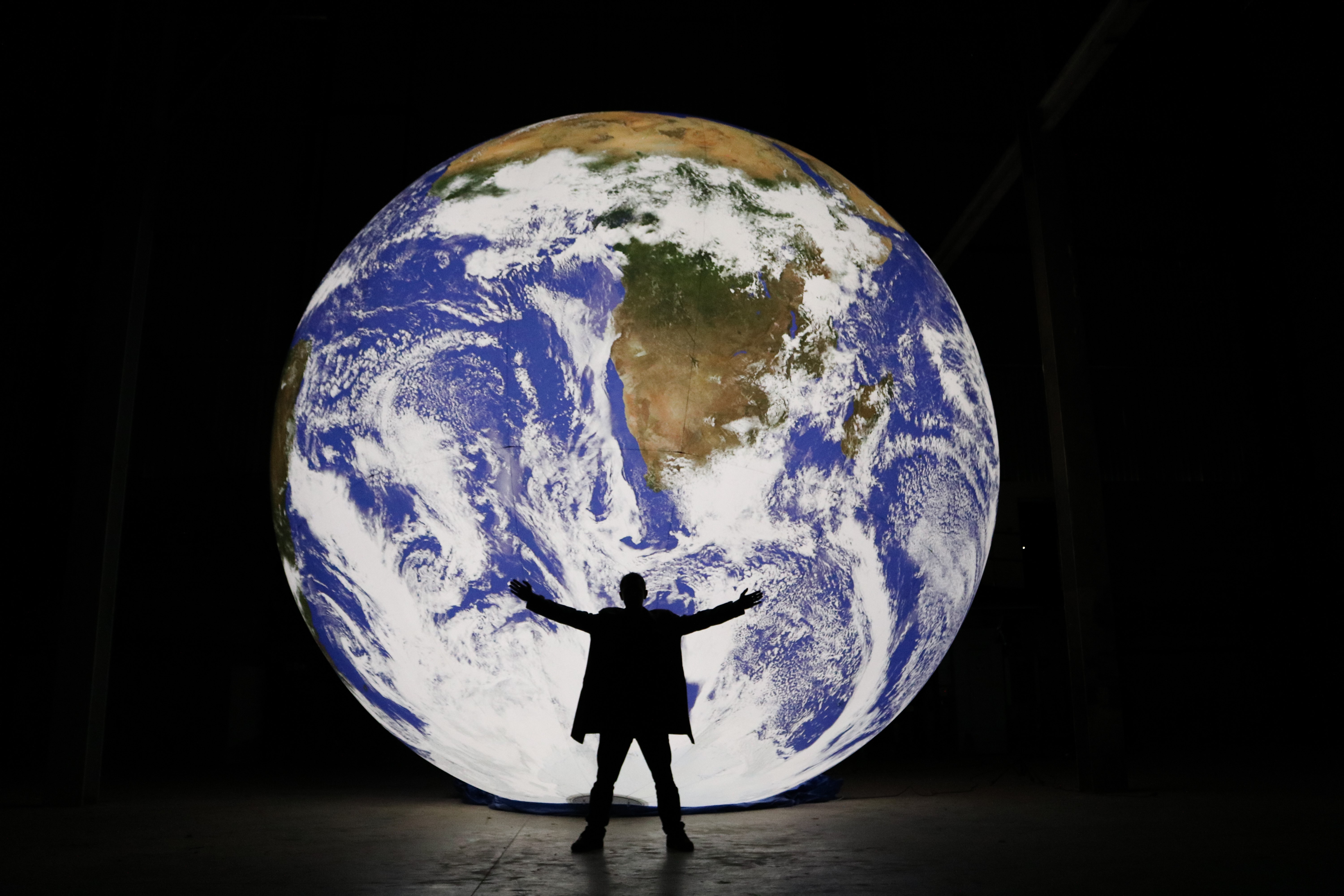Giant Earth to go on display next to blue whale at Natural History Museum
Artist Luke Jerram’s artwork will be installed in the Hintze Hall later this month.

A giant glowing Earth will be installed next to the skeleton of the blue whale at the Natural History Museum.
Bristol-based artist Luke Jerram’s seven-metre diameter orb artwork will go on display in the museum’s Hintze Hall later this month.
Jerram, best known for his giant Moon artwork which went missing in the post while touring around the world, created the illuminated surface of “Earth” using detailed NASA images taken from space.

The artist, whose moon artwork was later discovered in Austria, said: “I wanted to attempt to give the public the opportunity to see the Earth as a sphere, floating in the darkness of space. I hope to convey the fragility and beauty of our planet – our only home.”
Earth will be accompanied by a soundtrack by Bafta award-winning composer Dan Jones.
It will go on show for one evening as part of a one-off environmental “Lates” event, Your Planet Needs You, on Friday November 30 and was commissioned by the Natural Environment Research Council (NERC).
The Earth will then go on tour at events in the UK and around the world.
NERC’s associate director of communications and engagement Julia Maddock said: “Art has the power to speak to the heart and mind. We hope Luke’s ‘Earth’ will inspire audiences to meet the challenges we face on our planet…

“Your Planet Needs You is a unique opportunity to meet with the scientists confronting today’s biggest environmental issues and to engage with ways to tackle these important questions in a fun way.”
The free event, for adults to explore the museum after hours, with food and bar drinks, takes place at the Natural History Museum on Friday November 30, starting at 6pm, featuring interactive activities and talks from some of the UK’s top NERC-funded environmental scientists.




